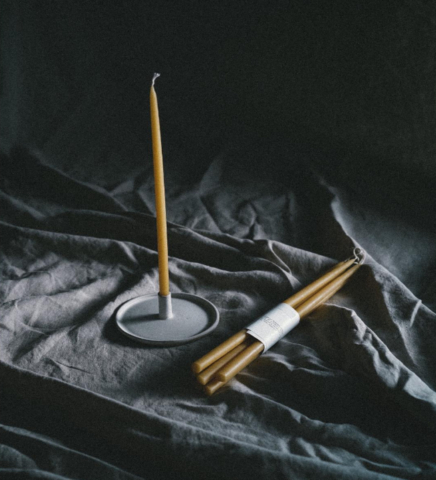Eco Opulence
By Catheryne Kelly
As the world opens back up again after what feels like a long and tumultuous slumber many of us are keen to face the outside again with a reinvented style. No doubt you’ll agree that amidst all that this year has thrown at us, 2020 has awarded us the time for both appreciation and reevaluation; especially in regard to the world around us. So why not inject a little of this fresh and responsible outlook into the curation of a more ethical and sustainable wardrobe? In Eco Opulence, may we introduce to you three sustainable fabrics, used by some of fashion’s most coveted brands, that ooze luxury in the most responsible way.
Let’s start with vegan silk. While silk itself is considered to be sustainable, in being completely biodegradable and having a low environmental impact, its production is often unethical. The most common way to produce silk unfortunately results in the destruction of millions of silkworms. To put it in perspective, it usually takes around 5000 insects to make a pure silk kimono.
While there are other, less harmful, methods to produce silk, wouldn’t it just be better to totally remove the moths from the equation and instead wear an equally luxurious, vegan fabric?
Enter Høst & Vår, a transparent, cruelty-free and sustainability-conscious brand from Norway. Each piece of every ultra-feminine collection is made from fabric designed to be as responsible as possible. One of their many ethical materials, used frequently in every collection, is cupro, a light, breathable silk-like fabric, which is 100% vegan.
Cupro is a regenerated cellulose fabric made from cotton waste. It is fully biodegradable, and when covered by soil can lose half of its original weight in approximately two months. What’s more, Høst & Vår know that most of the pollution created by a garment takes place after its purchase, when it’s washed, tumble dried and dry cleaned. Vegan cupro requires less detergent and water for cleaning, it provides low detergent residue, moisture control and naturally antibacterial qualities.

Now onto faux fur. It’s easy to see what the issue is with real fur it has been much documented. Yet there is also some debate around the production of faux fur. The majority of faux fur, particularly that which is used for fast fashion, has equally devastating impacts on the environment. The materials used to make it are all derived from plastics, which as we know, isn’t biodegradable. So when you discard your faux fur, it’ll spend an eternity as landfill fodder.
This means we have to be careful which brands we select in the search for our next faux fur coat. It’s essential to do your research. To point you in the right direction, there’s one faux fur manufacturer that comes top of the list in the sustainability stakes; Ecopel.
Thanks to Ecopel, we don’t have to make the call between wearing real or faux fur. It is one of the biggest global producers of fake fur fabric, and supplies over 300 of the world’s top fashion brands. Their material is crafted from post-consumer waste, such as plastic bottles, which they transform into soft, fluffy fabrics that not only eliminate the need for new acrylics and polyesters, but also prevent plastic bottles from ending up in landfill.
One of the most celebrated designers to use Ecopel fabric is Stella McCartney; the undisputed queen of green and cruelty-free fashion. Stella now uses Kobra ‘Fur-Free Fur’ for her iconic coats of the same name, which is the product of a collaboration between Ecopel and DuPoint Biomaterials. It is entirely made up of plant-based fibres, making it the world’s first commercially available faux fur using a bio-based ingredient.
With Stella’s designs, luxury never wains under the challenges that come with sustainability. Her coats are ultra-glamourous and are infinitely more appealing to us when we learn of their responsible origins.

Finally, let’s talk vegan leather. Due to the expense of the real thing, faux leather is not a particularly new phenomenon in fashion and has been around well before the recent sustainability boom. However, just like most faux fur fabrics, faux leather isn’t exactly the most saintly of cruelty-free alternatives.
Luckily, new innovation has found a way to convert the fibre of pineapple leaves into a more environmentally-friendly material. Leather goods expert, Dr. Carmen Hijosa, is the creator of Piñatex, this sustainable leather alternative. Nothing is wasted in the production of Piñatex once the long leaf fibres have been extracted from the plant, as the leftover biomass is used as a nutrient-rich natural fertiliser or a biofuel.

Last year H&M were the first to make this fabric mainstream, by incorporating it into their their ninth Conscious Exclusive collection. Even the likes of Paul Smith and Hugo Boss have used Piñatex in recent footwear collections.

Remember, there’s always the option of vintage as another way to wear sustainable. One brand that embodies this vibe entirely is Recycled Karma. Designed in Los Angeles, this apparel channels a classic, distressed rock’n’roll look, responsibly. Sport the likes of AC/DC, Blondie, and Duran Duran on trendy t.shirts that use fibres from five single use plastic bottles. There are so many inventive ways in which fashion innovators are ensuring to clean up their act!
It just goes to show that you don’t need to compromise between luxury and sustainability when it comes to the clothes you select; you just need to know where to look to find honest and transparent brands and manufacturers. Hopefully we’ve set you on the path to a greener wardrobe to suit the belated yet necessary push for awareness and responsibility around the globe.
If you enjoyed Eco Opulence, why not read In Your Element for an introduction to two luxurious yet sustainable lines of body care and home fragrance.




